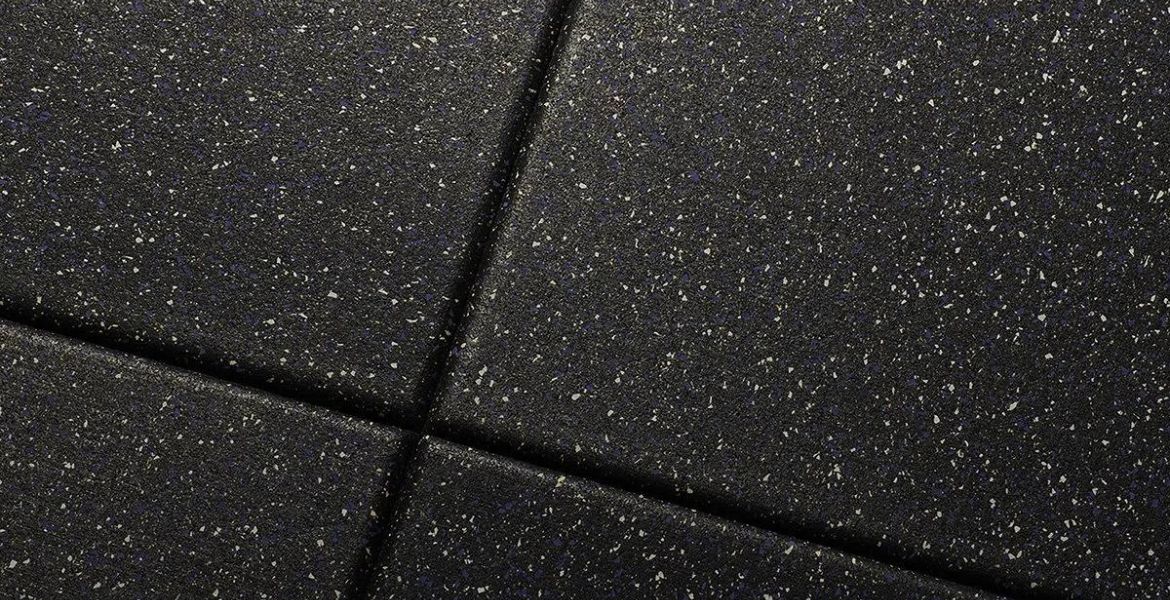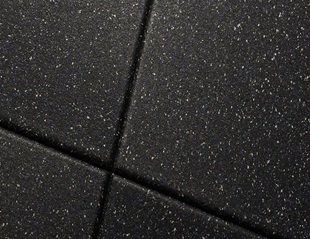
Rubber floors are a popular choice for sports areas due to their durability, shock absorption, and slip-resistant properties. They provide a safe and comfortable surface for athletes, reducing the risk of injuries.
Types of Rubber Floors.
>Rolled Rubber Flooring:
Rolled rubber flooring comes in large rolls that can cover extensive areas with minimal seams. This type of flooring is ideal for gyms, fitness centers, and indoor sports courts. Rolled rubber provides a smooth, continuous surface that is easy to clean and maintain. It is available in various thicknesses and colors to suit different needs and aesthetic preferences.
>Rubber Tiles:
Rubber tiles are modular flooring pieces that can be easily installed and replaced. They are often used in weight rooms, aerobics studios, and recreational centers. Rubber tiles come in interlocking or adhesive-backed forms, making them simple to install without professional help. They offer flexibility in design, as they can be arranged in different patterns and colors.
>Rubber Mats:
Rubber mats are individual mats that can be placed in specific areas requiring extra protection, such as under weightlifting equipment or in high-traffic zones. They are portable and can be moved as needed, making them versatile for various sports applications. Rubber mats are available in different sizes and thicknesses to provide targeted cushioning and support.
>Poured-In-Place Rubber Flooring:
Poured-in-place rubber flooring involves mixing and pouring rubber granules with a binding agent directly onto the floor surface. This type of flooring creates a seamless, durable, and customizable surface. It is commonly used in playgrounds, outdoor sports courts, and running tracks. Poured-in-place rubber can be tailored to specific design requirements, including logos and court markings.
Protection and Safety.
>Shock Absorption:
One of the primary benefits of rubber flooring in sports areas is its excellent shock absorption. The cushioned surface helps to reduce the impact on athletes’ joints and muscles, minimizing the risk of injuries such as sprains, strains, and fractures. This is particularly important in high-impact sports and activities involving jumping and running.
>Slip Resistance:
Rubber floors offer superior slip resistance, providing a safe surface for athletes even when the floor is wet. This reduces the likelihood of slips and falls, making rubber flooring ideal for areas prone to moisture, such as swimming pool decks and locker rooms. The textured surface of rubber flooring enhances traction and grip, further enhancing safety.
>Durability and Resilience:
Rubber flooring is highly durable and can withstand heavy use and abuse common in sports environments. It is resistant to wear, tear, and damage from heavy equipment, making it a long-lasting solution for gyms and sports facilities. Rubber floors maintain their shape and performance over time, ensuring consistent protection and safety.
>Hygiene and Maintenance:
Rubber floors are easy to clean and maintain, which is crucial for hygiene in sports areas. They are resistant to mold, mildew, and bacteria, promoting a healthier environment for athletes. Regular sweeping and mopping are usually sufficient to keep rubber floors in good condition. Additionally, the non-porous surface of rubber flooring prevents the absorption of sweat and spills, reducing the risk of odors and stains.
>Noise Reduction:
Rubber flooring provides excellent sound insulation, reducing noise levels in sports facilities. This is particularly beneficial in gyms and fitness centers where heavy weights are dropped, and high-impact activities take place. The sound-dampening properties of rubber flooring contribute to a more pleasant and focused training environment.
>Customization:
Rubber floors can be customized to meet the specific needs of different sports areas. They are available in various colors, patterns, and thicknesses, allowing facility managers to create visually appealing and functional spaces. Custom markings, such as court lines and logos, can be incorporated into the flooring design for a professional look.
- High Quality Products
- Expert Installation Services
- Exceptional Client Service
